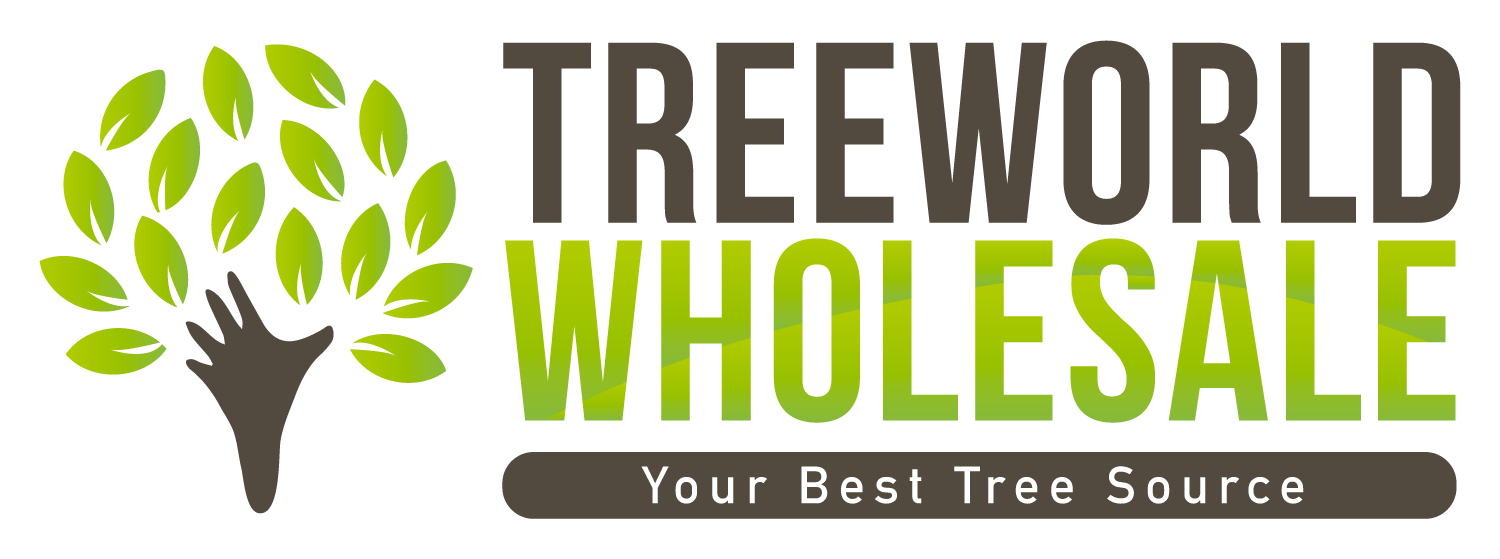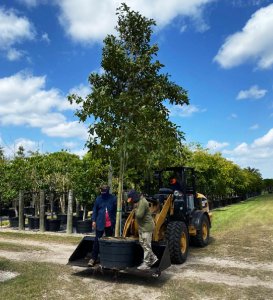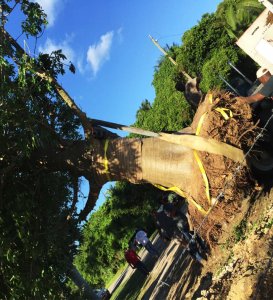How to successfully plant a tree or shrub in South Florida. As it requires a certain amount of study and planning to determine the best procedure to follow.
Guide to Planting a Tree in South Florida – 4 Key Steps
If you are considering to plant a tree in South Florida, we advise following this next four steps:
1. Determine Soil Type
Step 1 involves determining the soil type in the garden. It is important to keep in mind that the underlying bedrock of South Florida is limestone; which degrades into calcareous soils. These soils are alkaline, with pH values of 7.6 to 8.3, owing to the predominance of calcium carbonate. Neutral soils have a value of 7. South Florida soils in nature are commonly either rocky, with rapid drainage. Or marl soils in low-lying areas which are periodically flooded and have poor drainage, such as in the Everglades. Learning about the soil conditions dictates the proper amendments that the job requires and the management practices to assure good tree growth.
2. How to Handle a Tree
Step 2 consists of the selection of the species and the planting material. Soil conditions in the garden need to be sort out, along with the gardener’s personal preference. Along with consideration given to the garden space the tree will occupy and its compatibility with current structures and existing trees and shrubs. If the tree is a part of a planting program involving multiple trees, consideration needs to be given to how the new plantings will interrelate to each other.
The planting material can be simply a seed or cutting planted directly in the soil where it is to grow. However, this approach is risky because the survival rate will likely be very low. In order to reduce the risk somewhat, the procedure must be done with multiple seeds or cuttings. Placing them close to each other, and as they develop culling the least vigorous seedlings leaving only a single leader. Nonetheless, a more prudent approach is to purchase a seedling or small tree from a nursery and transplant it into the garden. In order to accomplish the planting protocol best, the recommendation is to do it at the start of the main growing season.
3. Select the species
Step 3 involves handling of the tree and field preparation, selecting and making the planting site ready to receive a presumed small tree. There are two rules to follow in handling a tree before planting: transport it carefully, keeping the roots moist, either in a root ball or container. The planting hole should be 2-3 times the width of the container or root ball. The depth should be made deeper than the root ball to allow better root penetration; but refilled so that the base of stem is at ground surface. The recommendation is backfilling around the root ball with a mix of good topsoil and organic matter, and creating a slight mound around the trunk at ground level to allow for subsidence. Also, staking or protecting the tree with a cylinder or mesh screen is an option.
4. Aftercare
Step 4 is aftercare. Immediately following planting, the soil around the tree should have the correct saturation. Regular watering should be done to keep the soil moist. And the frequency will depend upon the soil porosity, which in calcareous soils is high. Mulching around the tree helps keep the soil moist. Continuing to protect the tree from physical damage is essential in the first year. Fertilizer application should be until the second year after planting when developing roots are capable of absorbing nutrients.
Plant a tree in South Florida with TreeWorld Wholesale
Thoughtful selection of a tree from among the more than 200 species in the TreeWorld inventory, and following the suggestions given above should assure successful establishment of a new tree in your garden.
If you found this helpful, you might also enjoy reading: Best shade trees for South Florida!





Post a comment